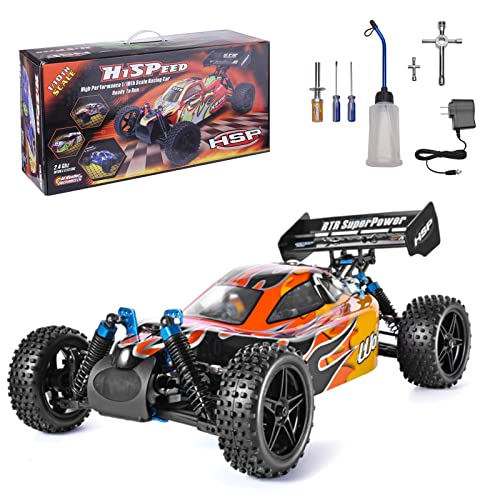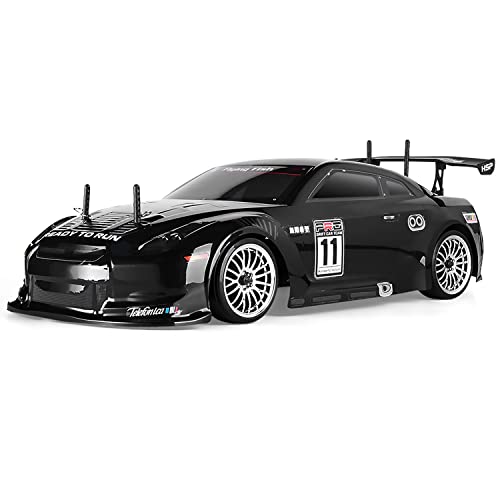Hey there, fellow racers! If you're reading this, chances are you're passionate about radio-controlled car racing, just like me. And let me tell you; there's nothing quite like the thrill of watching your carefully tuned machine zoom past the competition and cross the finish line in the first place.
But as any seasoned racer knows, mastering this hobby requires more than just a cool car and some basic driving skills. To truly dominate on the track, you'll need to hone your techniques, perfect your setup, and learn from successes and failures. I've compiled this article to share my top tips and tricks for taking your racing game to the next level. So buckle up, rev those engines, and get ready to become a true master of radio-controlled car racing!
Choosing The Right Rc Car
When it comes to choosing the right RC car, there are a few key factors you need to consider. First and foremost is deciding between purchasing a branded model or building your own kit. While pre-built models offer convenience and ease of use for beginners, those with experience with mechanical components prefer assembling their own from scratch.
Another important consideration is whether to opt for an electric or nitro-powered vehicle. Electric cars are cleaner and quieter, ideal for indoor tracks or neighborhoods where noise levels are regulated. On the other hand, Nitro cars provide more power and speed but require regular maintenance and tuning.
You'll also want to decide if you plan on racing on-road or off-road. On-road vehicles are built for smooth surfaces such as pavement or carpeted tracks, while off-road models can handle rougher terrain like dirt or gravel. Some racers enjoy drifting around corners in sleek drift-style cars. In contrast, others prefer a traditional touring style focusing on straight-line speed.
Lastly, you'll need to determine if you want a ready-to-run (RTR) model or one that requires assembly. RTR options come complete with everything needed to start racing out of the box - charge the battery pack and go! However, building your car from a kit allows for greater customization and control over its performance.
Now that we've covered what goes into selecting the perfect RC car, let's move on to how best to maintain it so that it runs smoothly race after race.
High-speed 4WD RC Monster Truck RTR
Powerful and Ready-to-Race Remote Control Off-Roader for Maximum Fun and Adventure
Product information
SGD 321.41 SGD 295.70
Product Review Score
4.84 out of 5 stars
230 reviewsProduct links
Maintaining Your Rc Car
Now that you've chosen the right RC car, keeping up with its maintenance is essential. Your vehicle is only as good as how well it performs and lasts over time, so maintaining your machine should be a top priority.
Cleaning Techniques: One of the simplest yet most overlooked aspects of maintaining an RC car is cleaning it properly after each use. Dirt and debris can build up on the chassis, motor, and suspension system and cause significant damage if left unattended. Ensure you use appropriate cleaners for different vehicle parts to avoid damaging them.
Battery Maintenance: A healthy battery is crucial for a successful race day. Ensure your batteries are fully charged before every run and store them at room temperature when not in use. Avoid overcharging or discharging them completely, which can significantly reduce their lifespan.
Tire Care: Your RC car's tires play a vital role in handling and grip during races. Proper tire care includes checking air pressure regularly, rotating tires periodically to ensure even wear, and replacing worn-out tires promptly.
As a seasoned radio control car racing expert, I cannot stress enough the importance of proper maintenance techniques. Neglecting routine upkeep could result in costly repairs or performance issues. By following these simple steps for cleaning techniques, battery maintenance, and tire care – among other things like suspension setup or motor maintenance – you'll have better chances of winning races while also extending the life of your beloved RC car.
Without further ado, let's move on to building your race track!
Building Your Race Track
When building your race track, several important factors must be considered. First and foremost is the track surface. The surface should be smooth and even, with enough grip for the cars to maintain control but not too much that they become difficult to maneuver. Additionally, consider adding obstacles on the track, such as jumps or hairpin turns, to create exciting challenges for racers.
The placement of these obstacles is crucial in ensuring a fair and balanced course for all racers. They should be strategically placed throughout the track, forcing drivers to slow down and navigate through them without causing collisions or accidents. Safety measures must also be considered when designing your course, including barriers around sharp turns and spectator areas.
Lighting options can add an extra level of excitement to night races or indoor tracks. Consider installing floodlights or other lighting systems to illuminate the course while providing adequate visibility for drivers. Finally, proper maintenance is essential in ensuring your path remains in top condition for years. Regular cleaning and repairs will keep it safe and enjoyable for everyone using it.
As you can see, constructing a well-designed racing circuit requires careful planning and attention to detail. However, once completed, it can provide endless hours of entertainment for both novice and experienced racers alike. The following section will explore the basics of racing – from throttle control to gear ratios – so you can hit the ground running (or driving) toward victory!
Understanding The Basics Of Racing
Now that you have your own race track, it's time to move on to the next step: understanding the basics of racing. Racing techniques are essential for anyone who wants to become a successful racer. Learning to navigate sharp turns, maintain speed and control, and avoid obstacles will give you an edge over other racers.
Track etiquette is also crucial in radio-controlled car racing. Be respectful of other racers by not cutting them off or bumping into their cars unnecessarily. Remembering that everyone is there to have fun and compete pretty is essential.
Starting positions can make all the difference in a race. Make sure you position yourself according to your skill level, with more experienced drivers at the front of the pack. Race strategy is also crucial; know when to push harder and when to conserve energy so you don't run out before the end of the race.
As important as these technical aspects are, the driver mindset plays just as significant a role in winning races. Stay focused on your goals, ignore distractions during races, and, most importantly, believe in yourself! With practice and perseverance, improving your racing skills is within reach.
Rraycom HSP Racing 1:10 High Speed Drift Car
Experience the Power and Speed of Rraycom's HSP Racing 1:10 High Speed Drift Car
Product information
SGD 235.34
Product Review Score
4.74 out of 5 stars
26 reviewsProduct links
Improving Your Racing Skills
Paying attention to the fundamentals is essential as you continue to hone your radio control car racing skills. Improving your racing abilities requires a combination of practice and strategy. It's like putting together a puzzle - each piece is necessary, but only when they come together can you see the bigger picture.
Braking techniques are essential for both safety and speed on the track. The right braking approach lets you maintain traction while slowing down before a turn. Remember that sudden or harsh braking can cause your car to spin out of control or lose momentum. Practice smooth and gradual braking by applying pressure gradually instead of suddenly slamming on the brakes.
Cornering strategies are also crucial for success in this sport. When turning corners, it's essential to use the entire track width and take advantage of any banking or camber on the road surface. Effective cornering involves finding the perfect balance between speed and grip to carry as much momentum through turns as possible.
Here are three tips:
1) Master racing lines by driving around them consistently.
2) Improve overtaking methods by watching replays of professional races.
3) Accelerate smoothly with proper throttle management.
Improving your racing skills takes time, patience, and dedication. Implementing these strategies into your training regime will make you one step closer to becoming an expert racer in no time!
Conclusion
So there you have it, folks. As a seasoned radio-controlled car racing expert, mastering this hobby requires dedication, skill, and patience. It's not just about driving around in circles—it's an art form!
As you hone your skills with the right RC car, maintain its performance through regular upkeep, build your own track, and understand the basics of racing, you'll see yourself improving over time. And who knows? You might even become the next big thing in radio control car racing! So keep practicing those techniques and never stop pushing yourself to be better than yesterday. Happy racing!


